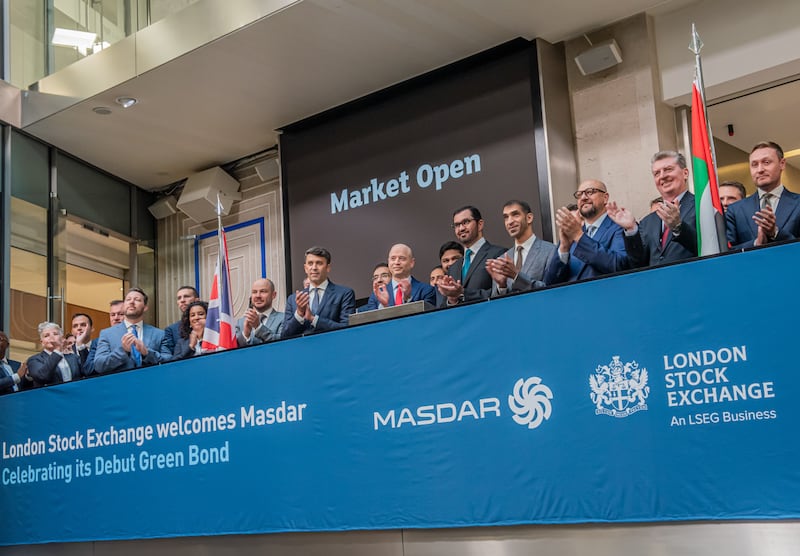When the Abu Dhabi clean energy company Masdar listed its first green bond on the London Stock Exchange on Monday, Dr Sultan Al Jaber, Masdar’s chairman and the Cop28 President-designate, described it as a “defining moment” not only for the firm but for climate finance in general.
Undoubtedly, the huge changes required to tackle climate change are fuelling investment in an array of companies and technologies that offer solutions to cope with a rapidly warming planet. According to research from industry advocacy group TheCityUK and BNP Paribas, the global green finance market grew from $5.2 billion in 2012 to more than $540bn in 2021. Green bonds accounted for the largest share of the market, rising from $342 million in 2017 to more than $78bn in 2021.
Countries leading the way on energy transition have been looking closely at green finance for some years. As far back as 2012, the Emirates launched the UAE Green Growth Strategy, which aims to make the country a global leader in sustainable economic development.

Seven years later, Abu Dhabi Global Market announced the Abu Dhabi Sustainable Finance Declaration, an initiative for financial institutions to commit to supporting climate-conscious development. Last month, the UAE Central Bank and the International Monetary Fund met in the capital to discuss co-operation on sustainable financing ahead of the Cop28 climate summit to be hosted by the Emirates in November.
So, although new horizons are coming into view, and it is an exciting time for this relatively new field of finance, some issues need to be considered. With any new or developing source of finance there can be uncertainty. For example, there is a relative lack of standardisation and no single definition of what constitutes a "green" investment. This was acknowledged in a Ministry of Environment document – State of Green Finance in the UAE – that said there is “no universal approach to green finance as it is defined by general positivity, specific technologies, profitability or others’ evaluation”.
Green investments with high up-front costs can be more expensive than traditional investments, which can make them less attractive to some investors. According to Morningstar data quoted in The Wall Street Journal in February the average green US stock exchange-traded fund charges 0.17 per cent in annual fees – 0.05 percentage points more than conventional funds.
Green investments also typically have a longer investment horizon, with long payback periods. This can deter investors who have shorter-term goals, but the matter of green finance is crucial for everyone’s future.
These are issues that have an importance far beyond the world of business and finance. It is not hyperbole to suggest the projects, technologies and companies currently at the heart of green finance will change, or even save, the world. The signs are encouraging that green finance is far from being a flash in the pan investment. It seems the smart money will be on those players who can offer solutions to arguably the most pressing problem for humanity.





